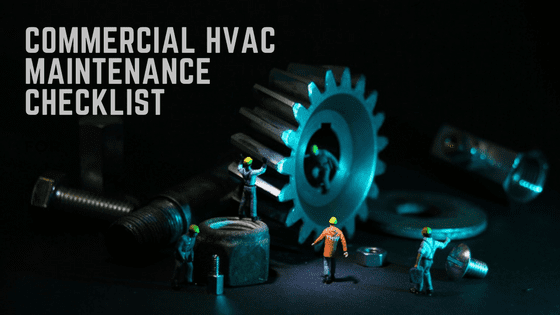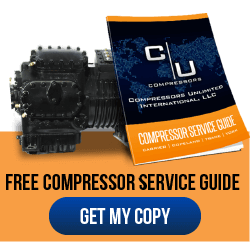The longevity and efficiency of your commercial HVAC system will mainly depend on how well you maintain it. Adhering to the recommended maintenance routine can help to reduce energy costs, prevent costly repairs, and extend the lifespan of the system.
According to a study by The New Building Institutes, cooling plant managers all across the country can reduce energy costs by up to 20 percent by carrying out regular HVAC maintenance. On the flip side, poorly maintained units consume up to 60 percent more energy.
To keep your commercial HVAC system performing optimally in 2020, here are monthly maintenance tasks you should carry out:
Regular Maintenance Checkups
Some of the maintenance practices you should carry out regularly are:
- Monitor the system to ensure it is operating according to manufacturer’s specifications
- Check and inspect the condensate drain. If the drain is plugged, it can cause water damage in the plant and affect the humidity levels.
- Lubricate all moving parts of the HVAC system to prevent friction
- Measure the voltage and current on the motors
- Tighten all moving parts of the system
- Check the thermostat to ensure that the HVAC system is working optimally and saving energy
The above activities should be done every time you are carrying out an HVAC maintenance routine.
To keep the system in top condition, carry out thorough inspection and maintenance of all parts. Here is a checklist of the areas you should concentrate on every month until the end of the year.
January: Clean the Condenser Coils and Evaporator
The condenser degrades faster than other parts of the HVAC unit, since it is exposed to unfiltered outdoor air. While the condenser does not affect the quality of indoor air, cleaning it will improve your unit’s energy efficiency.
February: Inspect the Belts, Pulleys, and Bearings
Inspect the belts for proper tension, cracking. and fraying. Also, lubricate the bearings to prevent them from overheating when the system is in operation.
Excessive tension stresses the bearings and motor. The tension can make the bearings break apart and leave the housing damaged.
March: Treat the Coils
Over time, coils can get attacked by molds. Treat the coils after every cleaning with antimicrobial treatments to keep them free from microorganisms. You can go further and clean the entire air handle to ensure the whole unit does not get attacked by microorganisms between cleanings.
April: Change the Blower Belts
Blower belts undergo regular wear and tear. Replace these parts once every year. If your HAVC unit is operating more extensively, you can replace the blower belts twice a year.
May: Check the HVAC Unit for Voltage Imbalances
Electrical gadgets like motors cannot work when the voltage is unbalanced in a 3-phase system. Check the system for voltage imbalances to avoid overheating and intermittent shutdowns of the motor controllers.
June: Inspect the Economizer
Inspect the economizer once a year. Confirm that the actuators and temperature sensors are working properly. Also, check the dampers and ventilation settings throughout the ductwork system.
July: Check the Refrigerant Level in the Air Conditioner
The system will not work efficiently if it doesn’t have the correct amount of refrigerant. Make sure the refrigerant is at the correct level, or else the system will be energy inefficient.
August: Clean the Air Ducts
Clean the air ducts regularly, depending on how much work your HVAC unit is doing. Generally, air ducts in milk cooling plants should be cleaned every two years. However, they can also be cleaned earlier, for example, after an inspection uncovers contamination.
September: Carry Out Overall Operational Checks
Check and adjust the refrigerant charge, and ensure the HVAC unit’s gas pressure is as recommended by the manufacturer. After inspection, carry out the necessary adjustments or repairs.
October: Clean Leaks in the Cabinet and Supply Ducts
Check whether there are any air leaks in the system and take the appropriate corrective actions. For example, you may need to patch or replace gaskets, latches, and screws to prevent air leaks.
November: Inspect the Blower Wheel Housing and Motor
Dirty blowers restrict airflow into the system, leading to failure of the compressor and freezing of the coils. Clean and adjust the blower to ensure proper airflow into the system and proper compressor performance.
Finally: Inspect the Air Filters every 4 weeks
The air filters should be inspected every 3 to 4 weeks and cleaned or replaced as necessary. These parts capture a lot of dust and encourage the growth of molds. Dirty filters also restrict normal airflow and make the HVAC unit inefficient. This also includes cleaning the evaporater coils. A diry coil could lead to poblems assciated with other parts of the system. (spring and early fall)
An old or malfunctioning HVAC is likely to have an inefficient compressor. This commercial compressor can quickly rake up your cooling plant or commercial space’s energy bills. You can save thousands of dollars in energy bills by replacing inefficient compressors with remanufactured ones. While remanufactured compressors are more affordable than their newer counterparts, they have been tested to ensure they reach the performance standards recommended by HVAC manufacturers.












